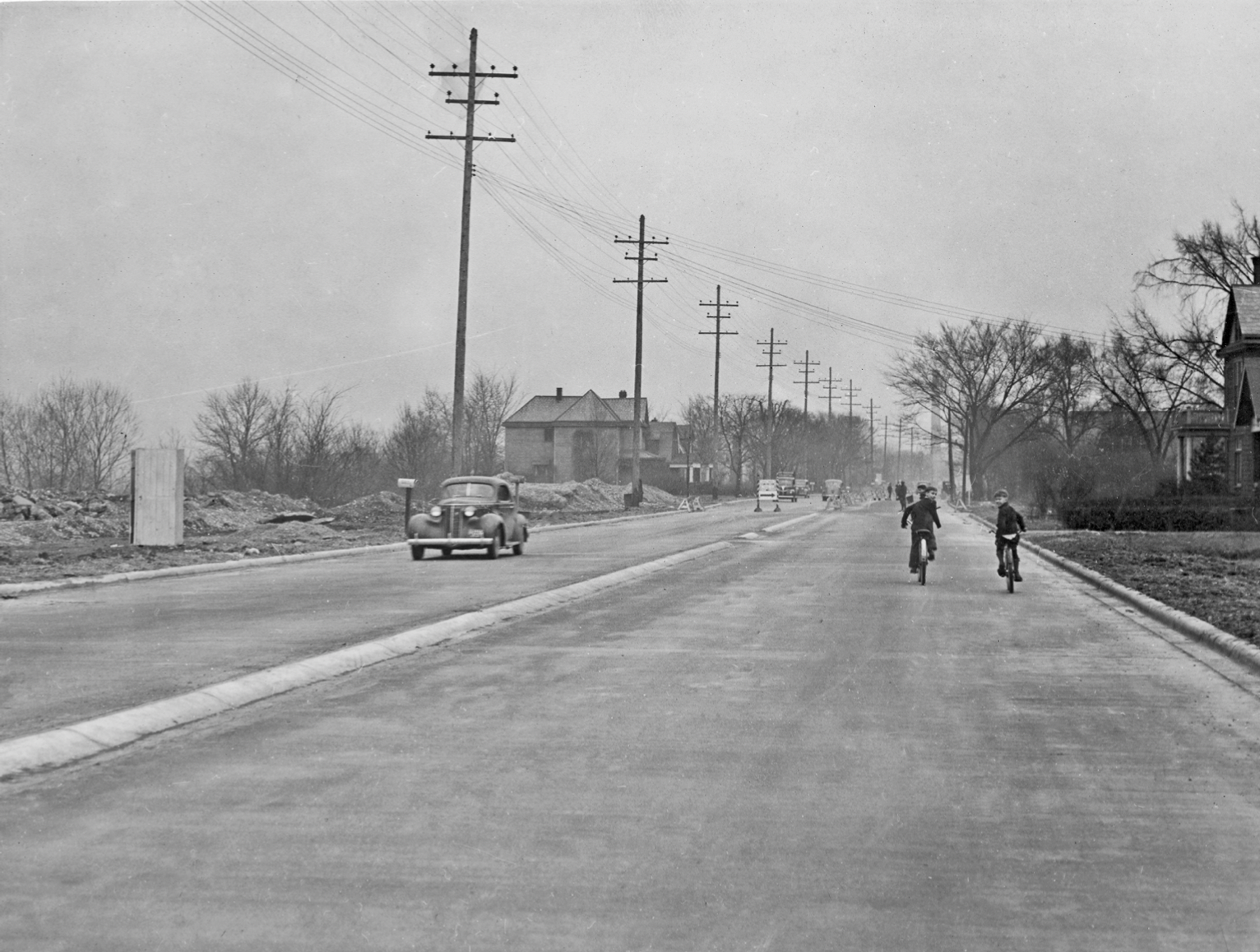Moment in Time (March 3, 2022)
This 1940 photo is a view of Dublin Road, looking from just east of Grandview Avenue toward downtown. This area, often referred to as the "Golden Finger", was part of a dispute between Columbus and Grandview because of the associated taxes from property and business along this route.
In 1922 the City of Columbus, arguing that because of the rate of growth in Grandview and Marble Cliff and the resulting number of added fire runs, Columbus (who had been providing fire service to the villages) began charging Grandview for service, and in 1923 cancelled all service. This action solidified the desire of Grandview to remain independent, and when Columbus (unsuccessfully) tried to aggressively annex the Village in 1931 (the same year Grandview grew large enough to be recognized as a city), the residents overwhelming voted against the annexation.
In 1954 Columbus elected a new mayor who was concerned that the city was being isolated by the growth of its independent suburbs. Jack Sensenbrenner’s proposed solution was simply that Columbus would outgrow its suburbs. There was a large amount of unincorporated land surrounding Columbus, and his view was that if Columbus could annex this land, then it, and not the suburbs, would benefit from new residents, as well as solving the issue that the suburb boundaries were in essence landlocking Columbus and preventing this growth. State laws in Ohio made annexation difficult, so Sensenbrenner and the Columbus City Council took a different approach. They knew that most smaller towns and townships could not afford to create and maintain their own water and sewer infrastructure, and these communities had contracted with Columbus to provide the utilities.
As a result of this philosophy, in early 1954 the Columbus City Council passed a resolution that stated "To preserve the city’s water supply for the benefit of residents of Columbus... no further
extensions of existing water mains or no additional taps be made except in territories annexed to Columbus." They went even further the next year when they passed a second resolution that stated "To protect the health of the residents of Columbus... no further extensions of existing sewer mains, trunks, and laterals, or no additional taps be made in territories outside the corporate limits of the City of Columbus, except in territories annexed to Columbus."
In 1955, The Ohio General Assembly made (for some suburbs) the process and decisions of annexation a little easier. The law was changed so that people were no longer required to switch school districts if their hometown or city changed. This allowed residents in areas annexed by the city to gain the benefits of being part of the city but let them keep their previous school district. The new law gave a new reason to pursue annexation, getting the benefits of living in Columbus, while not having to deal with city schools.
In 1956, Franklin County commissioners decided to grant annexation of 426 acres of Franklin Township to Grandview. The area was bounded on the west by an irregular line near Grandview Avenue, south by the Scioto River, east by Olentangy River Road, and north by Goodale Blvd. Among acreage and properties included in the area were the Columbus Waterworks and filtration plant, plots owned by Marble Cliff Quarries and American Aggregates, the site of the proposed Sears Roebuck building, WBNS-TV, and the Palmer-Donavin Company. According to a Tri- Village News article on December 20, this decision was vigorously opposed by Columbus City Service Director Floyd Redick, City Atty. Chalmers Wylie, and other Columbus city officials.
However, early the next year two of the three county commissioners voted to reverse the previous decision and deny the petition asking annexation of this acreage along Dublin Road to Grandview Heights. As a compromise measure, the commissioners agreed that under the 1955 law they would recommend to the State Board of Education that the tax money for school support continue to go to the Grandview Heights School District, which it agreed to. By 1971, the value of this land, called the "Golden Finger", was $17,857,862, nearly 25% of the entire Grandview Heights tax base.
That year (1971), the state board of education reversed its decision and reassigned the income from this land back to Columbus City Schools. This was a devastating loss to the small Grandview school district and raised concerns all around the Columbus metropolitan region that similar transfers would follow. Grandview appealed the decision, and the case wound its way through various court proceedings, until the Ohio Supreme Court upheld the decision in 1975.
(Annexation and Mayor Sensenbrenner The Story of How Columbus Grew to be the Largest City in Ohio By Alexander Tebbens (2013) https://teachingcleveland.org/annexation-and-mayor-sensenbrenner-the-story-of-how-columbus-grew-to-be-the-largest-city-in-ohio-by-alexander-tebbens/)
(Tri-Village News, Thursday, December 20, 1956)
(Gregory S. Jacobs, Getting Around Brown: Desegregation, Development, and the Columbus Public Schools, Ohio State University Press, 1998, pp 127-128)

